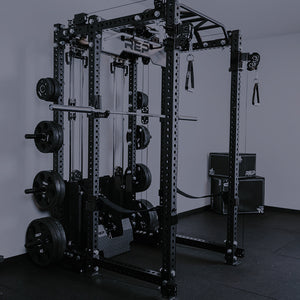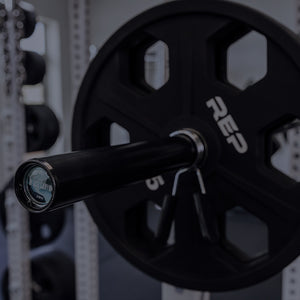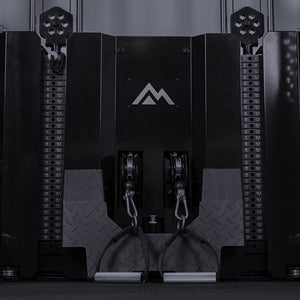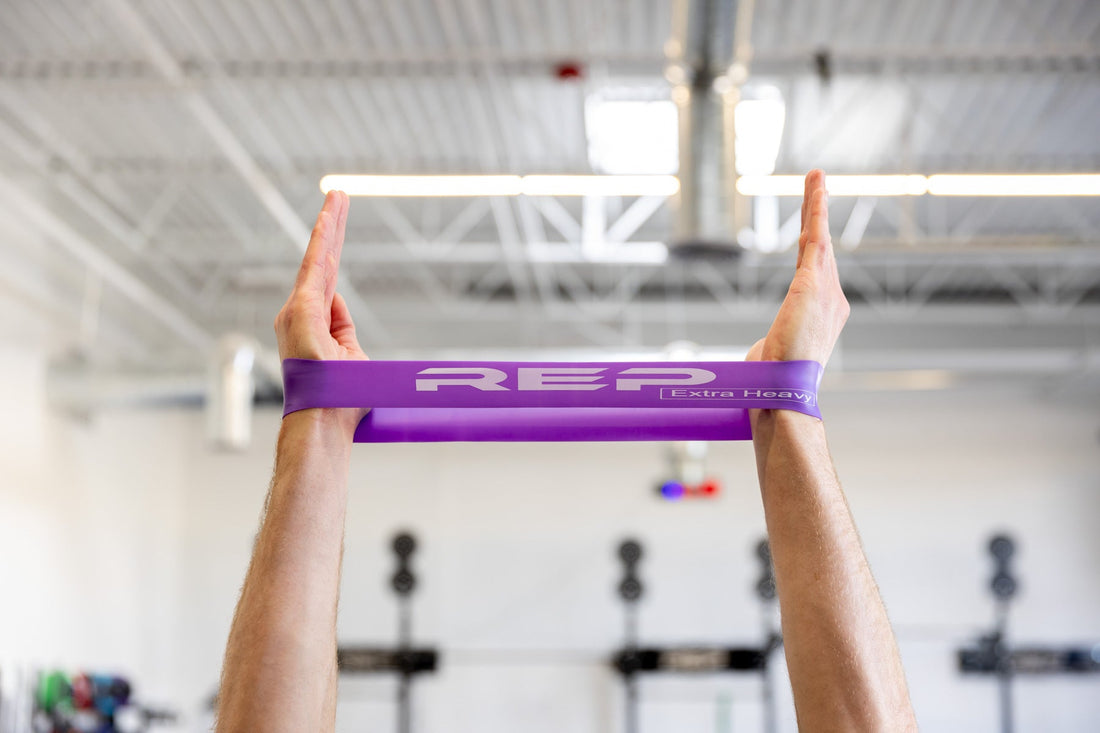
As we age, maintaining an active lifestyle becomes more important than ever. Strength training, in particular, can be a powerful tool for people over 50, helping to preserve muscle mass, enhance mobility, and improve overall quality of life.
Let’s chat about the benefits of strength training for older adults, including how to start safely and effectively.
The Importance of Strength Training After 50
Strength training is not just for ye young whippersnappers; it's vital for maintaining health and vitality at every age.
Note: We also recognize that age 50 in the gym basically equates to age 25 outside of the gym. Exercise can make you feel and actually look younger, and there's a substantial body of research to support this.
Exercise increases blood flow, which helps nourish skin cells. Blood flow also helps carry away waste products, including free radicals, from working cells. According to a study published in the journal Aging Cell, participants over 40 who engaged in regular moderate-to-vigorous exercise had skin compositions more akin to that of 20- and 30-year-olds, even up to age 65, suggesting that exercise can indeed make skin appear more youthful and reduce the signs of aging
Muscle Tone and Posture: Exercise helps maintain muscle mass and strength, which tend to decline with age. Maintaining muscle tone and strength can significantly impact one's appearance, making one look fitter and more youthful. Furthermore, strength training improves posture, which can make a person look younger and more energetic.
Beyond your appearance, strength training also offers other benefits as you age:
Increased Muscle Mass

As we age, we naturally lose muscle mass, a condition known as sarcopenia. This is a natural part of the aging process. Starting around the age of 30, people can lose between 3% to 5% of their muscle mass per decade. Most men will lose about 30% of their muscle mass during their lifetimes, and the rate of decline can accelerate after the age of 60 or 70.
This is about more than aesthetics. A review published in "Age and Ageing" notes that sarcopenia significantly contributes to the risk of disability. The loss of muscle affects metabolism, the ability to perform daily activities, and overall health.
Strength training helps mitigate this loss by stimulating muscle growth. Regular physical activity is considered one of the most effective strategies for preventing and managing sarcopenia, ensuring that muscle function is maintained as much as possible as you age.
Enhanced Bone Density
Regular strength training can prevent and even reverse bone density loss, reducing the risk of osteoporosis.
According to the International Osteoporosis Foundation, osteoporosis affects an estimated 200 million women worldwide—approximately one-tenth of women aged 60, one-fifth of women aged 70, a quarter of women aged 80, and two-fifths of women aged 90. While osteoporosis can technically begin at any age, the risk significantly increases as people age, especially post-menopause for women, which typically occurs around age 50. For men, the risk increases noticeably later, typically after age 70.
Healthy bone density can literally save your life. Osteoporotic fractures, particularly hip fractures, can lead to significant health complications, including increased mortality. Approximately 20% of seniors who suffer a hip fracture die within one year from complications related to the fracture itself or the surgery to repair it.

Improved Mobility and Balance
Stronger muscles and joints lead to better balance, coordination, and overall mobility, decreasing the risk of falls.
Falls are the leading cause of both fatal and non-fatal injuries among older adults. According to the Centers for Disease Control and Prevention (CDC), more than one out of four older people falls each year, but less than half tell their doctor.
Check out this story: Want to Live Longer? Build Muscle!
Getting Started: What's Your Current Fitness Level?
Before diving into a strength training program, start by assessing your current fitness level. Consulting with a healthcare provider can ensure that you're ready to begin exercising without risking injury.
Looking for guidance? Check out these fitness programs to help you work out at home or in the gym, if you don’t have a one-on-one personal trainer. Future uses a combination of technology, content, and elite personal trainers to empower their members through fitness. Future's custom-made training plans with personalized audio coaching are designed to keep you coming back. You can reach your goals at home, in the gym, or at your group fitness classes, when and where it’s most convenient for you.
Strength Training for Seniors
A well-designed strength training program for seniors should include exercises that build strength, improve balance, and enhance flexibility. Here’s a simple routine that can help you get started:
Squats Using a Bench
Start by sitting and standing from the bench to perform squats safely. This helps build leg and core strength while minimizing the risk of falling.
The AB-3100 is REP’s most affordable adjustable incline bench, while still featuring six back pad adjustments (from flat to 90 degrees) and three seat angle options (from flat to 20 degrees).

An adjustable bench is a great choice for its versatility, as you increase your strength. A FID bench (flat/incline/decline bench) is a great find, or at least look for an incline bench.
Presses With a Bench
Use dumbbells to perform chest presses – start light. Check out the Ergo Hex Dumbbells, which feature an ergonomic handle and center knurling to provide a comfortable yet strong grip. The AB-3100 bench offers sturdy support and comfort, ideal for older adults.
Rows with a Power Rack
Secure a barbell on the rack at waist height. Perform rows to strengthen the back and improve posture. The PR-4000 rack creates a safe, sturdy, and versatile environment for strength training. Depending on your strength, you might try the 20kg (45ish lbs Colorado Bar) -- or if that’s too heavy, go for the 15kg Colorado Bar (about 33lbs) or the Mesa Technique Bar (15lbs).
Exercise Ideas and Modifications for Older Adults
Leg Exercises

Squats: Use the AB-3100 Adjustable Bench for support. Squat to the bench and back up.
Step-Ups: Utilize a low platform to strengthen legs and improve balance. A great option is the Stackable Wood Plyo boxes, which have a 4” and 6” height option. With the stackable boxes, you can increase the height of your steps as your strength and balance improves.
Upper Body Exercises

Wall Push-Ups: Stand facing a wall, place hands on it, and perform push-ups to build upper body strength without lying down.
Barbell Rows: Using the PR-4000 Power Rack and a barbell, perform rows to strengthen the back and shoulders.
Core Exercises
Seated Twists: Sit on the bench with a medicine ball; twist from side to side to engage the core muscles. REP offers various weights of Medicine Balls, starting at 4lbs.
Resistance Bands for Strength Training

Resistance bands are an excellent alternative to free weights, dumbbells, and barbells, especially for older adults. They are versatile, easy to handle, and gentle on the joints, making them ideal for maintaining strength, flexibility, and overall fitness without the risk associated with heavier weights. Here’s how older adults can effectively use resistance bands for their training:
Start with Lighter Resistance
Choose bands with lighter resistance to start. Resistance bands typically come in a variety of strengths, usually indicated by different colors. Starting with the least resistance allows older adults to perform exercises without straining their muscles and joints.
Focus on Major Muscle Groups
Older adults can use resistance bands to target major muscle groups through simple exercises. Here are some effective movements:
Leg Presses: Sit on a chair, loop a band around your feet, and press your legs outward against the band's resistance.
Chest Press: Anchor the band behind you (e.g., on a closed door or heavy furniture), hold the ends of the band with both hands, and push forward until your arms are extended, then slowly return.
Rows: Sit on the floor with legs extended, wrap the band around your feet, and pull the ends towards your abdomen, squeezing your shoulder blades together.
Incorporate Full Body Exercises
Resistance bands can also be used for full-body exercises that improve balance and flexibility while strengthening muscles. For example:
Standing Squats: Stand on the band with feet shoulder-width apart, hold the ends with both hands at shoulder level, and perform squats while keeping hands stationary.
Seated Rows: Sit with legs extended, loop the band around your feet and pull toward your waist, keeping your back straight.
Learn More

Learn more about exercising with resistance bands here:
What Are the Different Exercise Bands and How to Use Them?
Different Pull-Up Band Exercises
Nutrition Tips for Muscle Maintenance and Recovery
Nutrition plays a crucial role in muscle recovery and overall health. Protein is especially important for muscle repair, so including ample protein in your diet is essential. Foods rich in calcium and vitamin D should also be prioritized to support bone health.
Incorporating Recovery and Flexibility Work

Recovery is as important as the exercise itself. Include activities such as yoga or stretching to enhance flexibility and aid muscle recovery. The REP Fitness 3-in-1 Soft Plyo Box is excellent for gentle stretching exercises as it provides a stable and soft surface.
Also check out the various mobility tools, such as mats, bands, foam rollers, and a great massage gun. Try the new Premium Yoga Mat in cork for a place to stretch and do yoga. And the Yoga Mat Carry Strap can double up to assist with stretching your tight muscles, such as hamstrings.

Learn more about recovery and flexibility here
- Why Improve Your Mobility – And How?
- How to Properly Warm Up Before Lifting Weights
- Why Are Rest Days So Important for Your Fitness Goals?
- How Often Should You Work Out?
Ultimately, strength training after 50 is not just possible; it’s beneficial and can dramatically enhance the quality of life. By using quality equipment and focusing on safe practices, older adults can enjoy the many benefits of strength training safely and effectively.
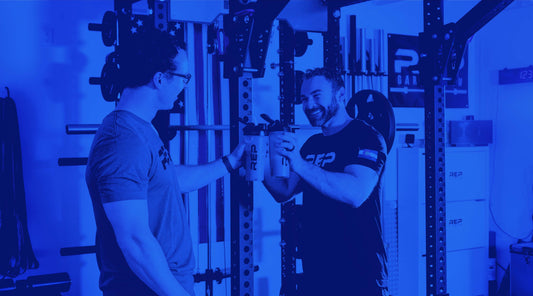
NEWSLETTER SIGNUP
Product launch information, promotions, blogs, and REP news.


